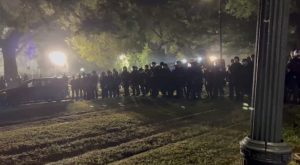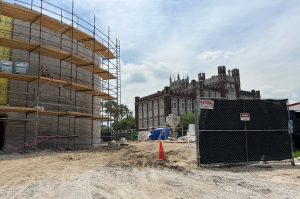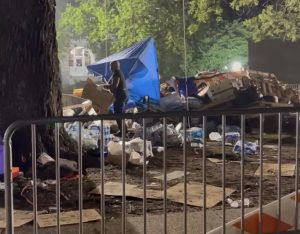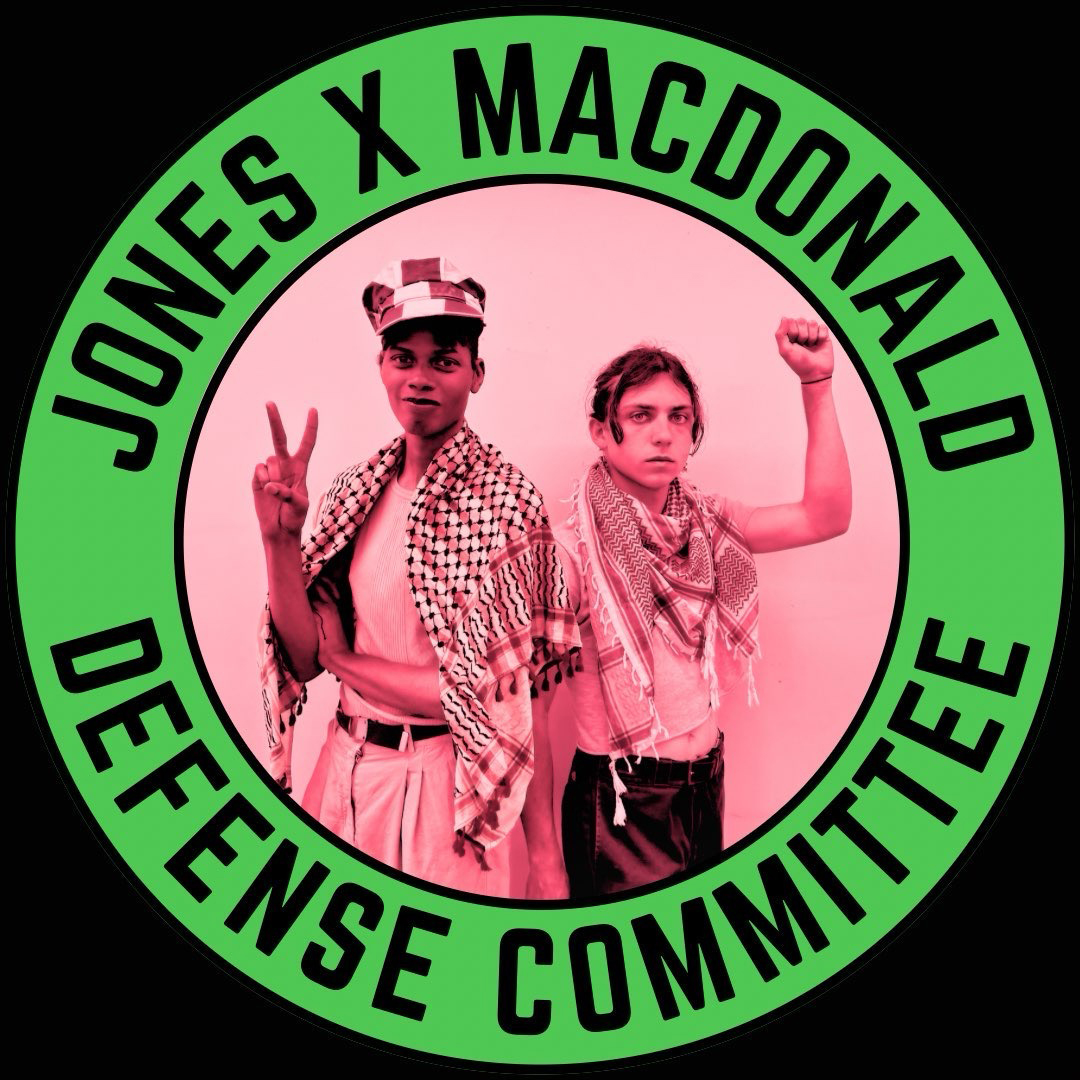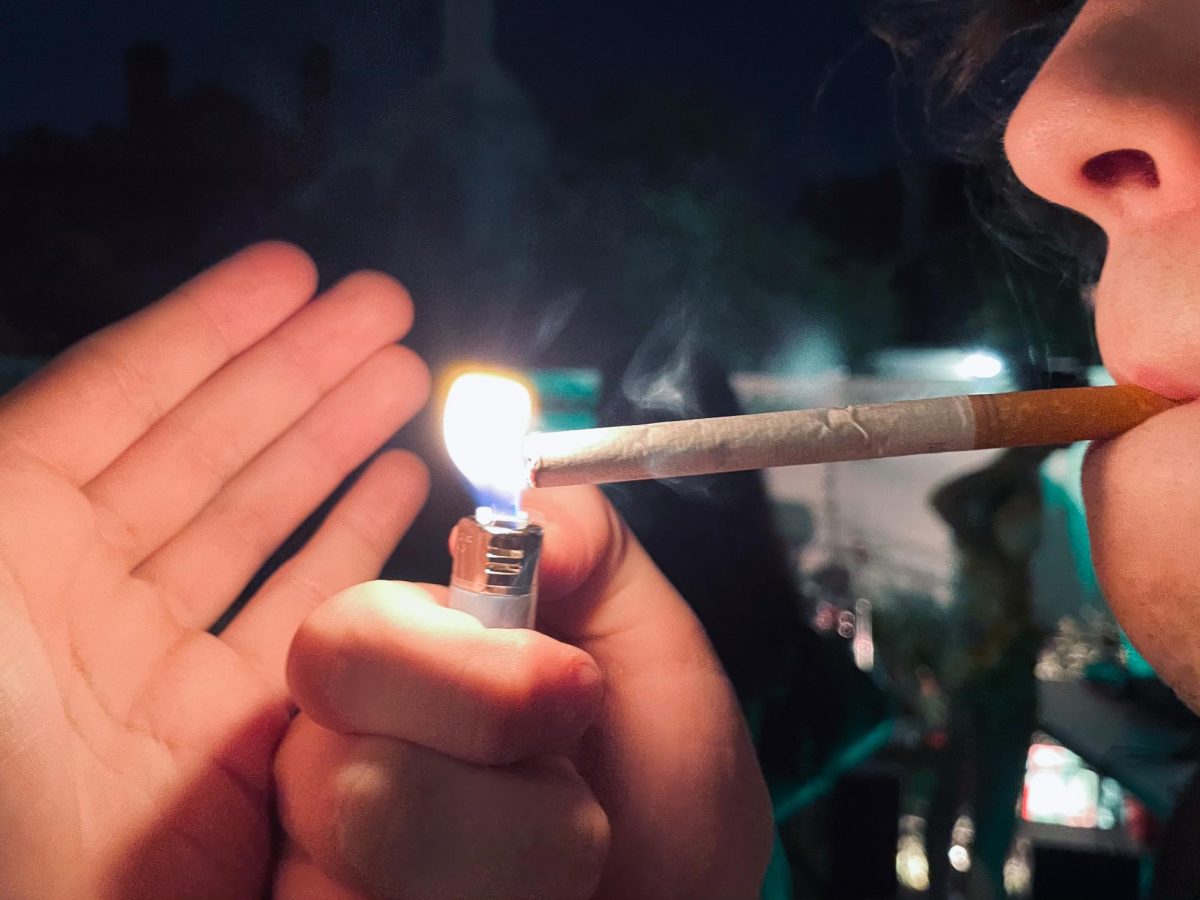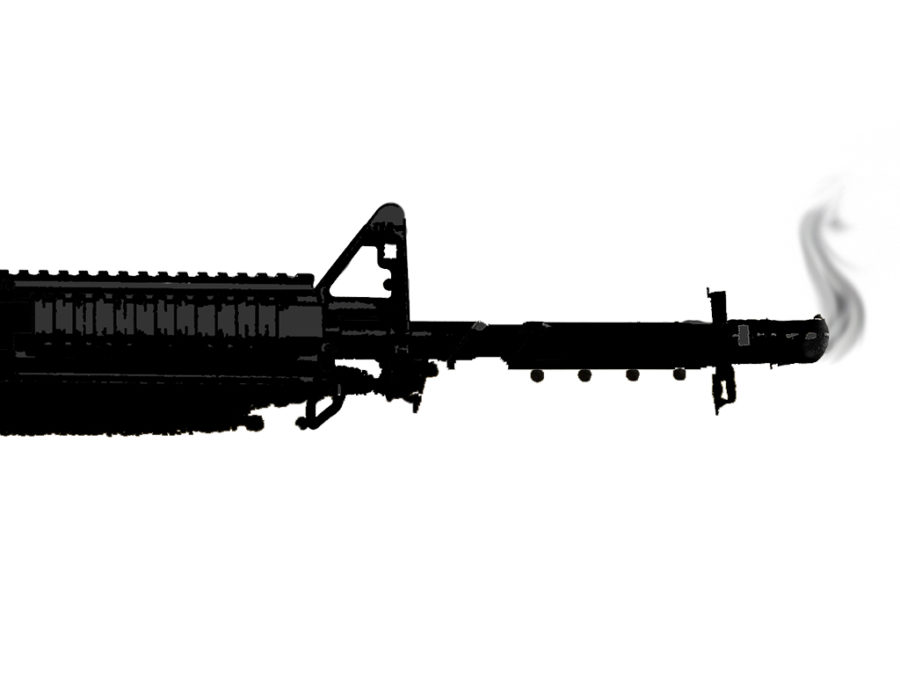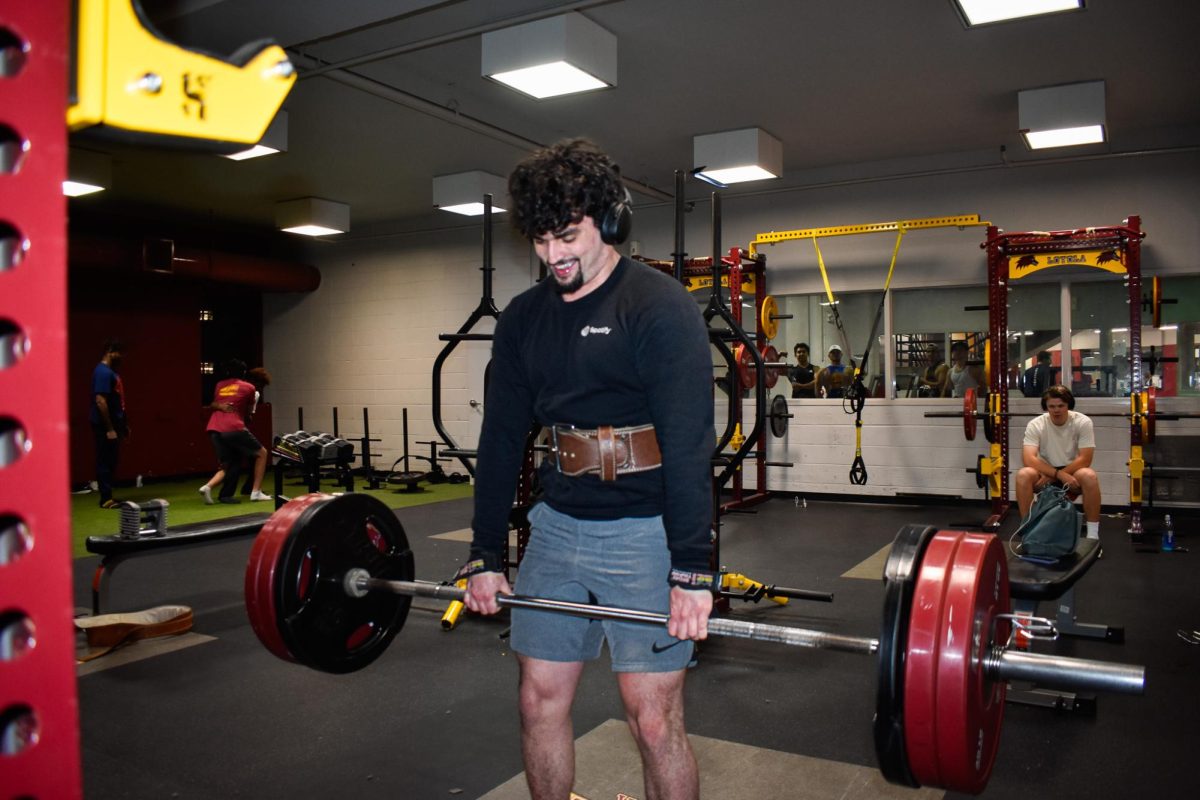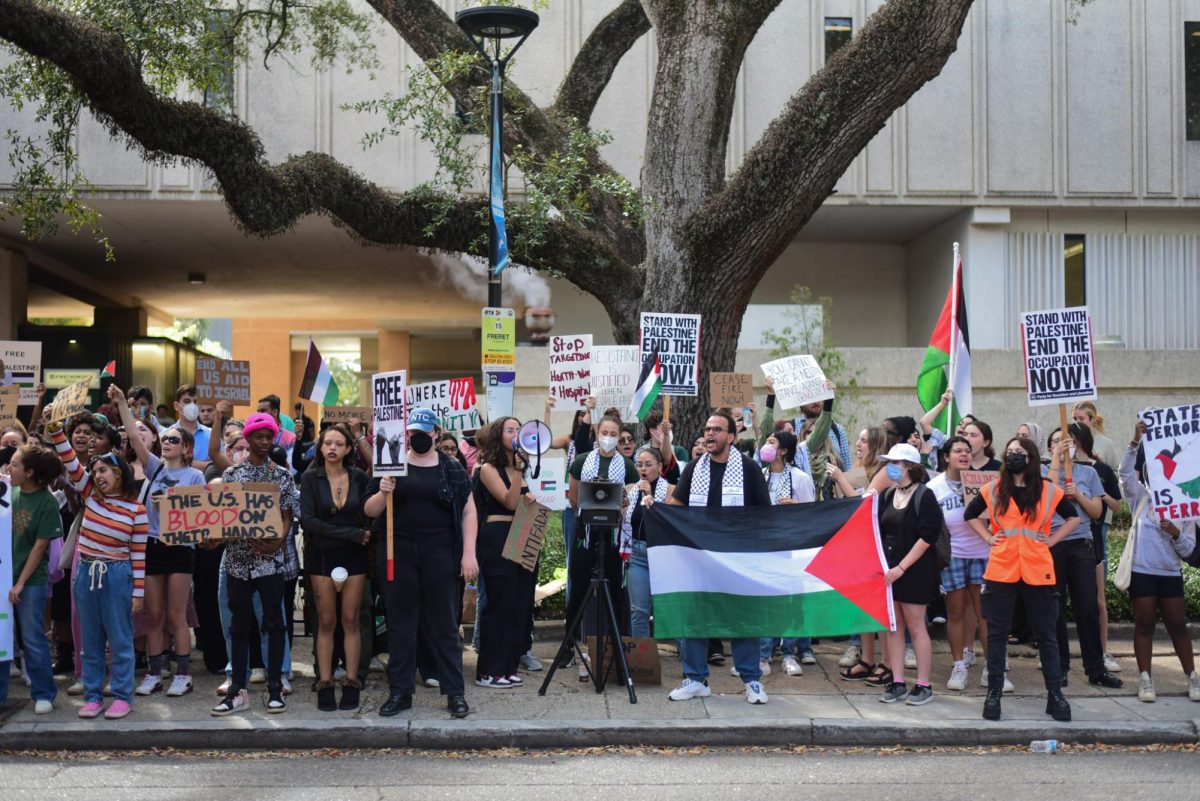A ‘Pack of the future: Part 1 of 3
Doug Neill, computer science senior, has a problem. Not a big problem, as long as he hurries. And not uncommon, because he shares it with about 19 other guys around his age. And though the problem exists now, Jim Eiseman, vice president for Student Affairs, says he hopes it won’t last much longer. “I can’t tell you how much the distance to the field bothers me,” Neill said.Unfortunately for Neill, the long, low rumble high above his head means his condition just got worse. “Looks like rain,” he says, sprinting toward the Rec Plex garage as the first few drops of a late fall storm begin their descent. The gray blanket, stretching low across the sky from the Mississippi to West Metairie means one of two things to Neill and the rest of the players on the Loyola baseball team. There will either be traffic, the standstill type that plagues I-10 on a day like this, resulting in a delayed practice, or the possibility of a 30-minute drive to the Lakefront wasted, because the field at Wesley Barrow Stadium has been flooded since earlier that afternoon.So take these things into consideration and sympathize, for the problem Neill faces Monday through Friday has just gotten worse – he’s forgotten his cleats.”It’s not like the field’s in our backyard. Turning around now would make me late, and that’s worse than no cleats,” he says, opting to continue the drive, all the while praying for a rain that would make the forgotten piece of uniform unnecessary. Eventually the storm hits hard, and practice is a rainout. The team turns around and drives 30 minutes back to school for a shortened practice on the carpet in the Rec Plex – tennis shoes permitted. But one factor most teams don’t have to consider is the problem of where to play. It’s not like Field of Dreams. The ‘Pack can’t just till up the closest cornfield, chalk off a diamond and call it home.This isn’t Iowa. It’s Uptown New Orleans, where vacant land is a commodity about as rare as a Saint’s title win. But could there be an answer to the ‘Pack’s problem of distance? There once was, and there’s a possibility that there shall soon be again.The answer, from the past, lies along an old rock asphalt road, slicing through an orchard of pecan trees near the river in Audubon Park. Here a baseball field sits, old, dilapidated and dry from the lack of maintenance it takes to keep one up.From the re-establishment of Loyola baseball in 1990 to the 15-29 season of 1995, the Loyola Wolfpack baseball team played its home games on that field, or as Neill might’ve put it, right in Loyola’s backyard.Brett Simpson, former ‘Pack player, now assistant athletic director, was in his third season when the team played its last game at the River View, or as Loyola students familiar with the area call it, “the Fly.””I’ll tell you this,:the atmosphere was probably one of the best in college baseball, just being on the river, being close to campus, being next to the zoo,” Simpson said.”There’s so many people at the Fly on the weekend anyway. People would sit on the levee and bring their ice chest and bring a picnic lunch and just watch the game,” he said.So what happened to the glory days? And can they be recaptured? The answer to that question may very well be yes.A few of the higher-ups at Loyola are tossing around the idea of Wolfpack sports in Audubon Park once again.”I am absolutely interested in trying the proposal again. There’s no question about it,” said Jerry Hernandez, head athletic director of Loyola.Eiseman is another heavy-hitter for the cause..”I want our students to be able to walk to the ball games. Both our basketball and our volleyball played on campus are very successful. I mean, the bleachers are full with students screaming and yelling,” Eiseman said. “I would like to see baseball the same way, but to do that we’ve got to get them closer.””I always go out and watch my students and the people I know play, but I’ve got to leave an hour ahead of time just to catch a 5 o’clock game,” he said.Eiseman commented on the interest in reopening negotiations expressed by Loyola’s president, the Rev. Bernard Knoth, S.J. “I think if I’d have been in my position then, I’d have gotten him involved, and I’d have made it work out…You don’t have to convince me of the benefits of another Uptown baseball field,” Eiseman said. “And I definitely don’t see Barrow as a forever situation.”The field, which is still owned and operated by the Audubon Institute and leased to Loyola for an annual fee, allowed anybody at any given time access onto the field to come and go whenever he pleased.”After we’d leave, God knows what was going on,” Simpson said. “There were tire tracks on the infield; family reunion softball games were played there. There’d be beer cans in the dugout.”In the fall of 1995, Craig Bogar, head athletic director for Loyola at the time, and Don Moreau, head baseball coach, drew up a proposal that would allow Loyola to fence in the field, sink a small investment into it and eventually mold the area into one of the premier parks of the South.But the Audubon didn’t take.”The Audubon Institute at that time contested that they were not interested in allocating a portion of their land to a private institution,” said Bogar, now head athletic director at the University of Mobile.Sarah Burnett, head of public relations at the Audubon Zoo said that no one affiliated with the Institute at the present would have been involved with the 1995 proposal.She did mention that any leasing proposals would have been handled by former operations director Bob Becker.Becker, now CEO of City Park, declined any comment.Moreau, head baseball coach of the ‘Pack since 1990, said he doesn’t know what went wrong. “Fencing and lighting…a first class field, which we would monitor. About $185,000 going into it initially, with so much money going to them and so forth. Sheesh, I don’t know.”On top of that, overseeing his own little spot of green would’ve allowed Moreau the opportunity to conduct more competitions, such as tournaments of Jesuit colleges in the spring and high school round-robins in the summer.When looking at the benefits of Loyola’s ownership of this area -beautification of the park, an extra field for area high schools to play on and a small profit for the society themselves – some are wondering if there’s any obvious reason why the Audubon Institute wouldn’t want to lease the land to the ‘Pack.


